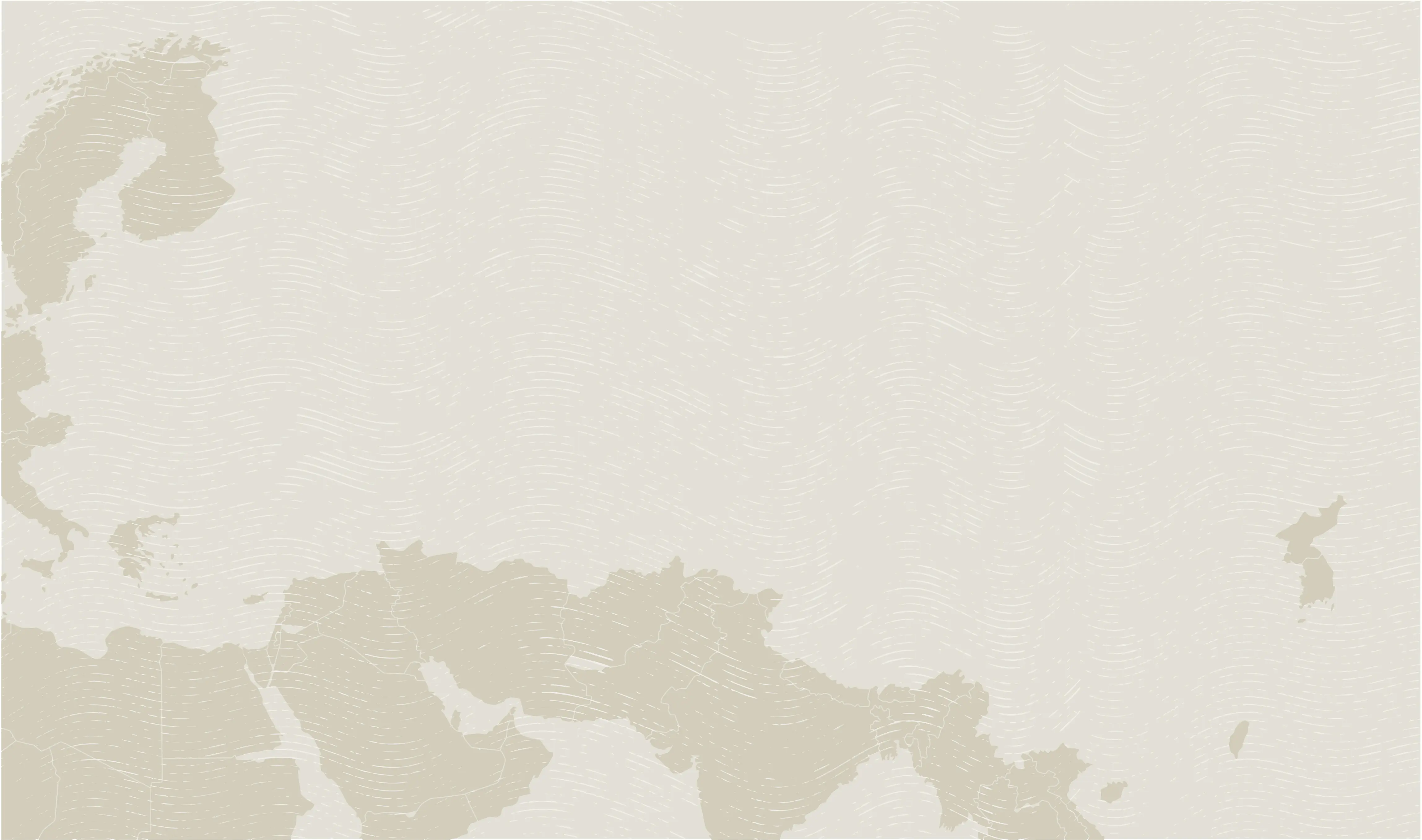Photo credit: Ann Schneider
Looking Good in Iran: Hijab How-Tos
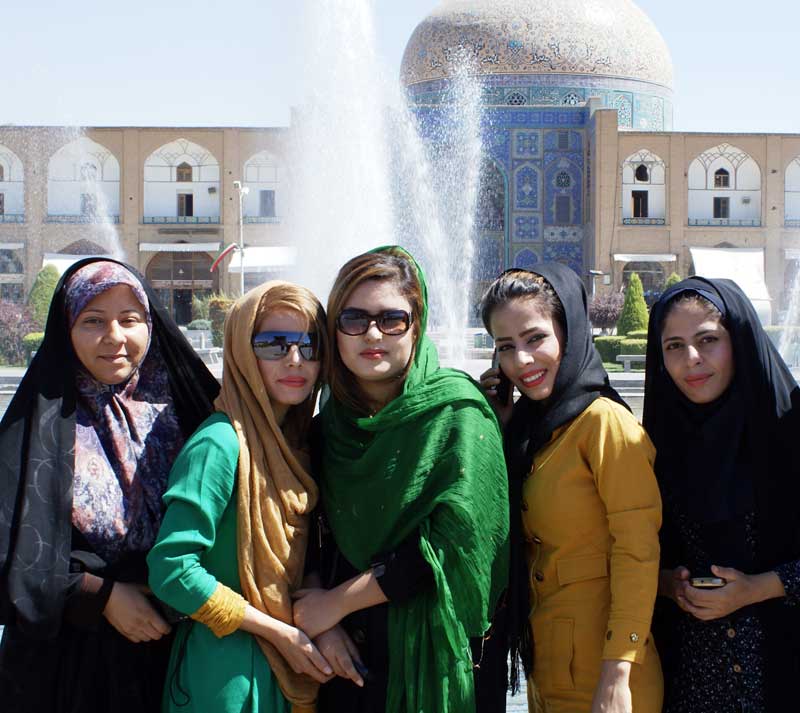
Iran is a complex place of searing beauty, with its shapely domes, mosaic-clad minarets and arched madrassahs set against a brilliant blue sky. With a culture that prizes hospitality above all, the people of Iran pride themselves on being friendly and warm to travelers, wherever they are from.
Former MIR Sales Specialist and Tour Manager Devin Connolly led travelers on journeys to many countries, including Iran. With more than 15 years of travel to Iran, MIR’s travel professionals are experts in helping travelers prepare for their visit.
Enjoy Devin’s inside scoop on hijab best practices as she answers travelers’ most common questions.
What should women travelers wear in Iran?
Devin: The question of hijab, or the Islamic dress code, is one I spend a fair amount of time addressing while leading tours to Iran. All women visiting Iran are bound by the rules of proper Islamic dress during their stay, but the fact that there are no hard and fast written rules about what constitutes hijab can lead to confusion before and even during the trip.
The whole point of hijab is to encourage modesty, and its basic (and unwritten) rules are that a woman must wear loose-fitting garments, only showing her hands and face. However, the nuances of implementing hijab are much more complicated.
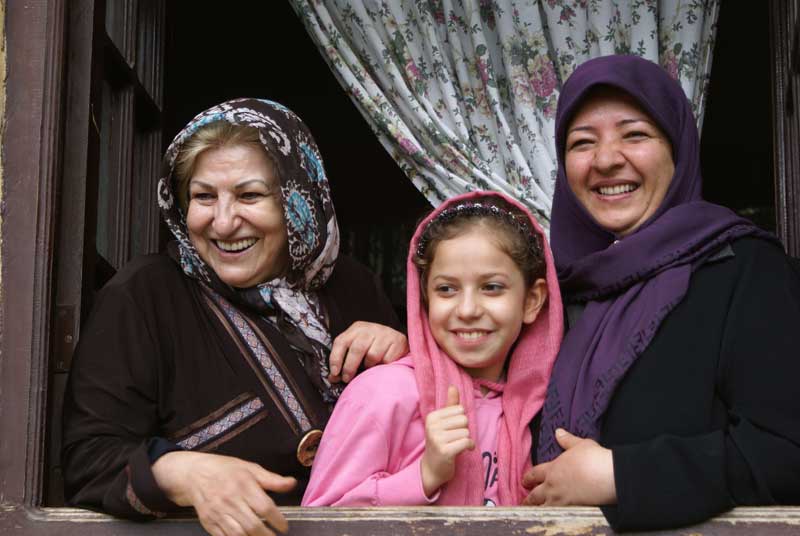
Can you break down the rules of hijab for us?
Devin: Yes, let’s tackle hijab from head to toe, beginning with the headscarf, which is a compulsory item for women at all times in Iran.
Headscarf tips:
- Where to wear: It should cover most of the hair and the back of the neck.
- OK to show some hair: It’s acceptable to show a bit of hair in front; the scarf doesn’t need to be tightly closed around the neck, but long hair or a bare neck should not be peeking out the back.
- Pin it! Some women use barrettes, bobby pins or even claw-style clips to hold their scarves in place. It may not look 100% authentic, but it sure beats fussing around with a slippery scarf all day.
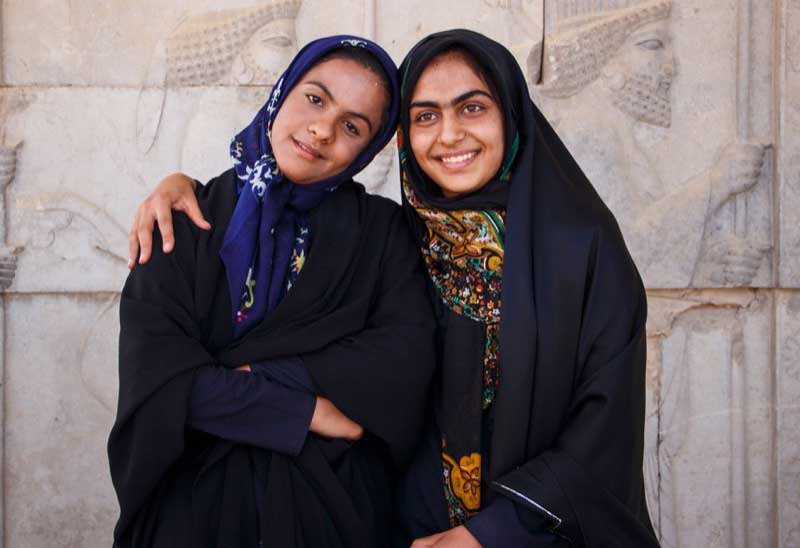
Are there certain fabrics that work best for headscarves?
Devin: Yes, it’s personal taste, but there are other factors as well.
Fabric tips:
- Choice of fabric is important. Though softly flowing silk scarves have an undeniable aesthetic appeal, the scarves that work best on a day-to-day basis in Iran are the ones with a bit of friction. So when shopping for head coverings, go for grip rather than slip; light, gauzy cotton scarves are the best.
- Buy it at the bazaar: There are many scarf shapes and styles to choose from. These can be inexpensive and can be purchased on one of the many bazaar visits throughout the itinerary.
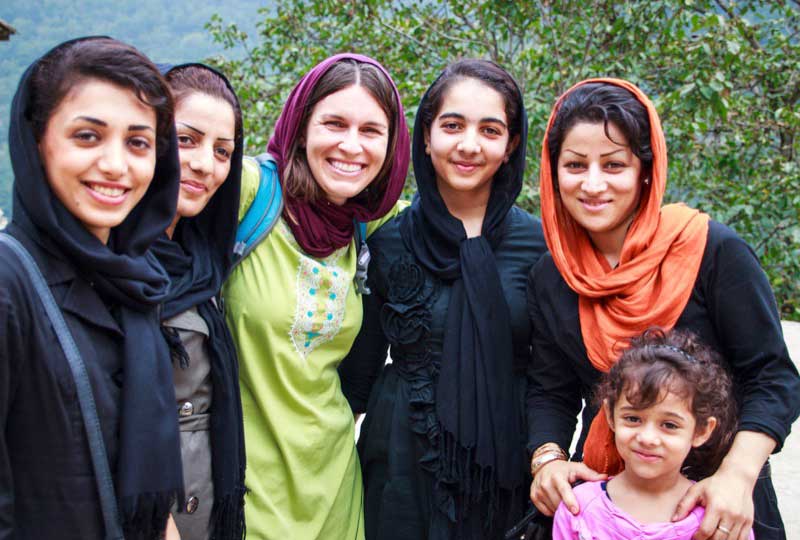
How do I actually put on a headscarf?
Devin: It’s a bit of trial and error, figuring out what works.
Styling tips:
- Experiment: Before departing for Iran, I recommend that women experiment to find which scarf shape and wrap style works best for them.
- “Tuck and drape:” The style I end up wearing most often is “tuck and drape,” which involves placing a rectangular scarf over my head so that it is shorter on the right side, then tucking the shorter side around my neck over the left shoulder and gently draping the longer side over the right shoulder, thus covering the half that I’ve “tucked” and creating a lovely pleat in the “drape.” When using a scarf that has good grip, the “tuck and drape” is an easy style that gives me several hours of low-fuss scarf wear.
Any wiggle room with décolletage?
Devin: No. It shouldn’t be showing – plain and simple. It’s OK to show the skin of the neck, but the collarbone and certainly anything below it should be covered.
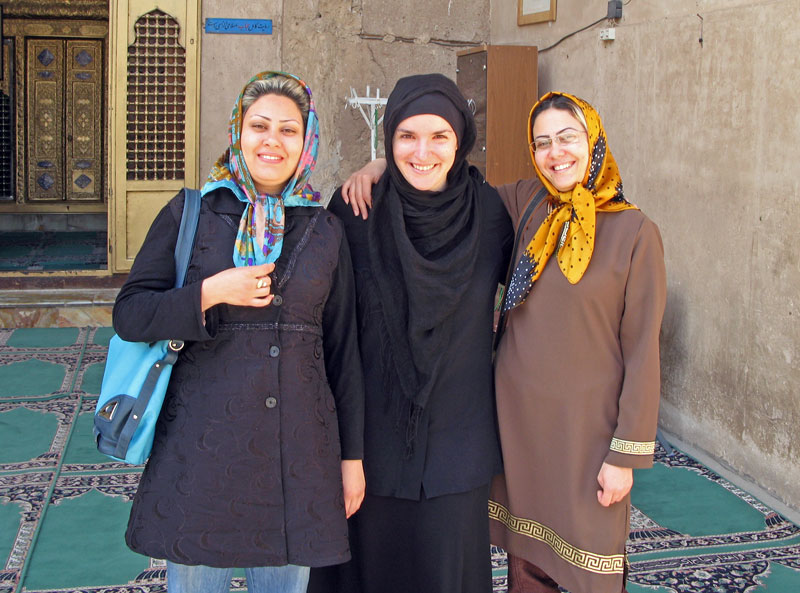
What about tops? What’s OK to wear?
Devin: Light and breathable long-sleeved tunics are the way to go. No top should be tight-fitting, especially around the waist, and the top must reach at least mid-thigh.
Top Tips:
- Manteau: Most Iranian women wear a button-up tunic called a manteau, which is French for “coat.” These are widely available in Iran and there is usually a dedicated opportunity for women to shop for clothes within the first two days of touring.
- Online efficiency: Before your trip, it’s a great idea to shop at websites such as East Essence or Modanisa for suitable clothing. It’s convenient and affordable, and then you don’t have to worry about spending your touring time shopping for clothes. Remember, you must bring at least one complete hijab outfit in your carry-on to wear as you enter Iran.
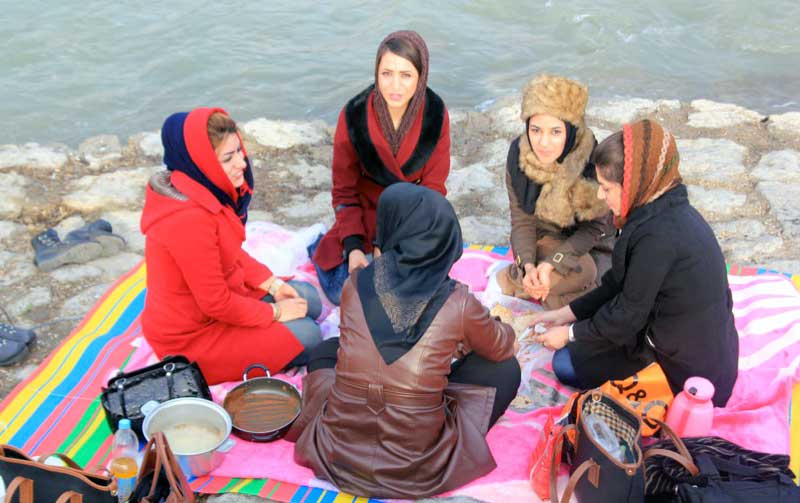
The bottoms seem pretty tricky – true?
Devin: Not necessarily. Pants are fine, but they must be (you guessed it) loose-fitting and full-length – no capri pants, sorry!
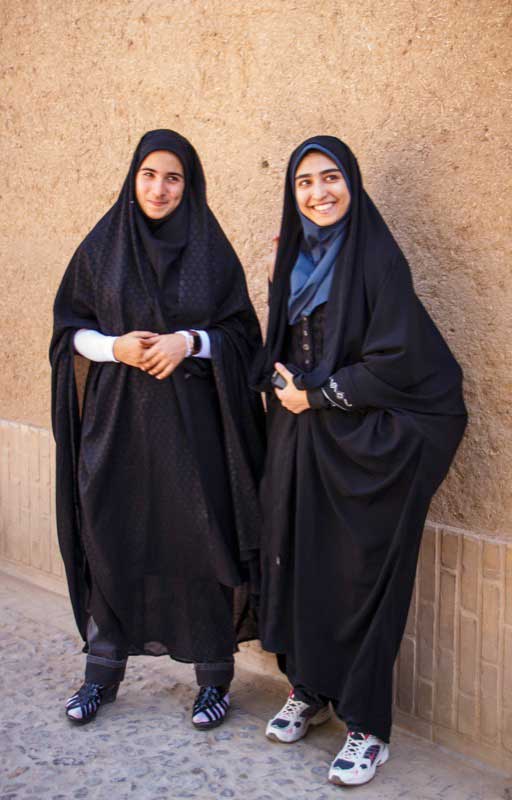
Pants, Skirts and Sandals Tips:
- Skirts and long-sleeved dresses are acceptable, but they must come down to the ankles.
- Sandals: The question I get asked the most about hijab guidelines involve wearing sandals without socks – OK, or not? It’s hard to answer with 100% certainty, as the rules of hijab often change with the political climate. In general, it’s OK to wear sandals without socks.
- Socks: However, anyone who wears sandals without socks must always pack an emergency pair of socks with them for the day’s touring. It is improper to enter a mosque barefoot and there are quite a few mosques on MIR’s Iran itineraries.
Finally, feet. What about footwear?
Devin: Any kind of shoes are acceptable, but sturdy and comfortable shoes are the best ones to pack, as some touring days can be long.
How does a female traveler beat the heat when dealing with all this extra clothing?
Devin: I’m often asked about comfort in hot weather.
Cool Tips:
- Hike up your sleeves: There are several tricks to keeping cool in Iran, one of which is to hike your sleeves up a little bit. The general rule of “only hands and face can show” can usually be bent along certain lines, and a partially rolled-up sleeve is not likely to cause any heads to roll. The main guideline for showing arms is that the forearms are generally acceptable, but the elbows should not show, so stop the sleeve-rolling before that point.
- Wear sandals without socks, maybe: As I mentioned earlier, you can wear sandals without socks if you’re careful about it. But don’t forget to keep an emergency pair of socks handy just in case it’s necessary to slip on socks under your sandals.
- Pack light clothes: I think the best tip for keeping cool in Iran is to pack light, breathable clothing made from natural fibers like linen and cotton.
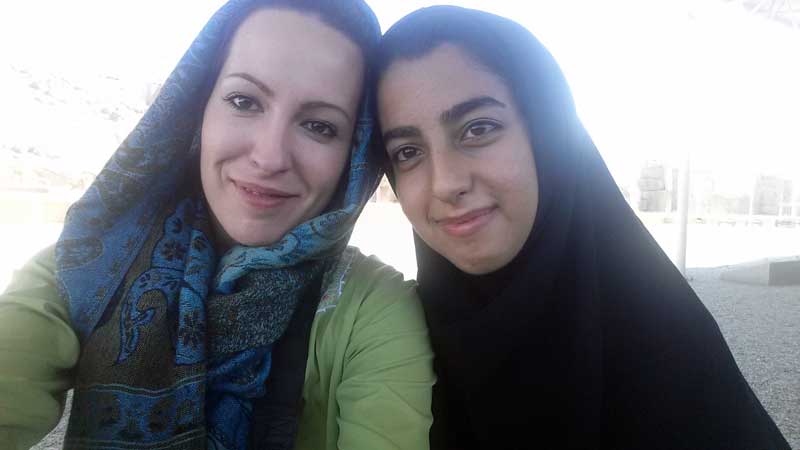
Are certain colors forbidden to wear?
Devin: Many women mistakenly think only darker colors are acceptable – not true. As a rule, Tehrani women tend to be the most colorful dressers. Women in the smaller towns tend to be more conservative. We foreigners won’t be judged harshly on color as long as the main tenets of hijab are followed.
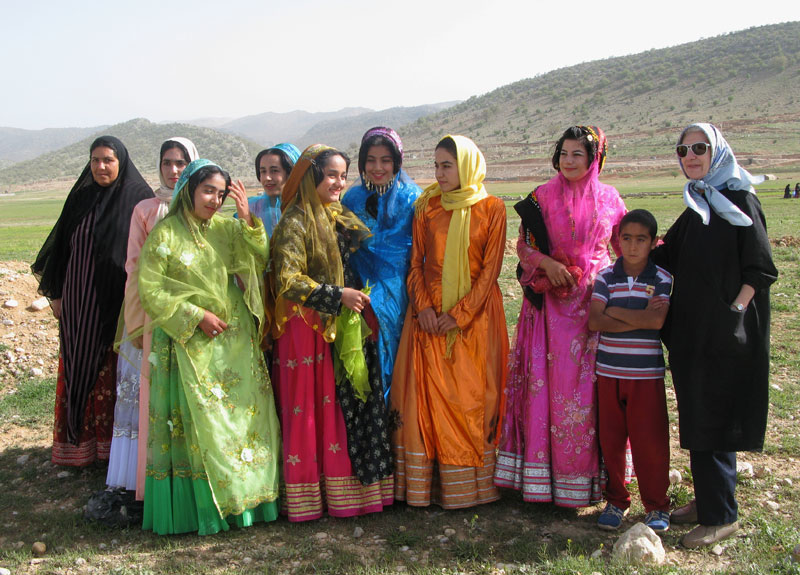
So can you sum it all up?
Devin: Sure. What constitutes proper hijab can vary depending on the current political climate, so don’t arrive in Iran with only ¾ sleeve shirts and not a single pair of socks.
Be prepared for the most conservative variant and check with your guide and tour manager for the go-ahead for these little “keep cool” shortcuts. Local women push the limits all the time in Iran – especially in the fashionable northern Tehran neighborhoods – but then, they have a much keener sense of what they can and can’t get away with. I’d advise against looking to reform-minded local women for an example of the hijab standard.
These guidelines have worked for me over several years of touring in Iran (and three presidential administrations). It’s important to remember that hijab must be worn in every public place, including at breakfast in the hotel and on the bus at all times. The only time it is acceptable for a woman to remove her scarf is when she closes her hotel room door behind her at the end of the day.
Wearing the hijab isn’t always easy, especially on hot days, but for the visitor it is a temporary immersion that lends an unmistakable sense of place to your travel experience.
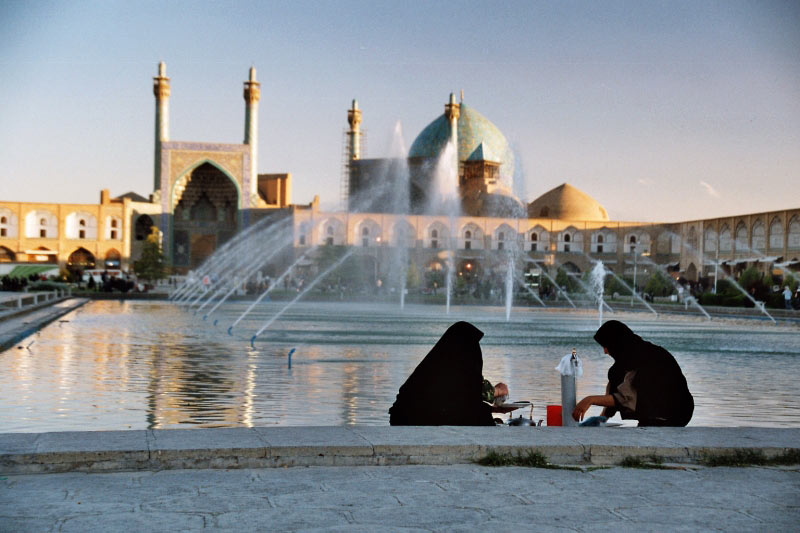
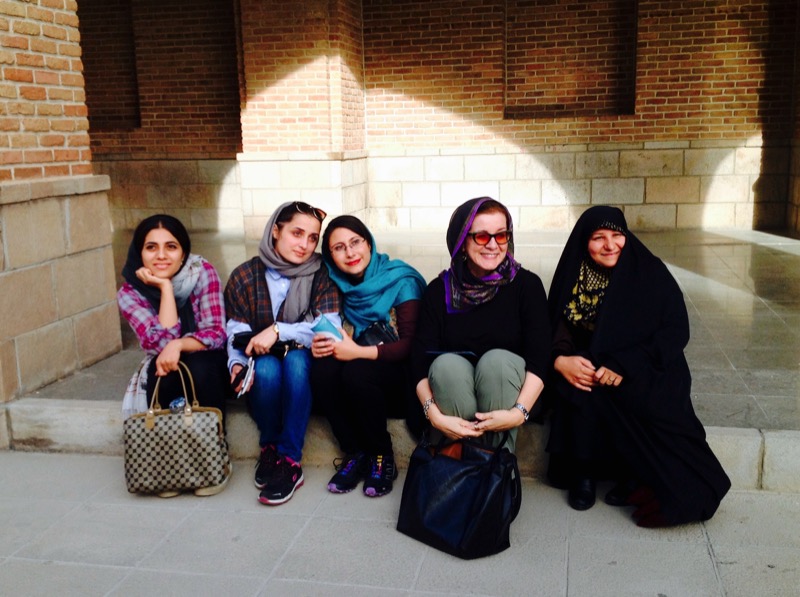
Travel to Iran with MIR
MIR has more than 20 years of experience hand-crafting tours to Iran. MIR’s full service, dedication, commitment to quality, and destination expertise has twice earned us a place on National Geographic Adventure’s list of “Best Adventure Travel Companies on Earth.”
Choose from MIR’s variety of small group tours and rail journeys by private train that explore Iran. You can also opt to travel on your dates and at your pace on MIR’s Essential Iran independent trip or on a custom, private tour of Iran.
Chat with one of our destination specialists today!









